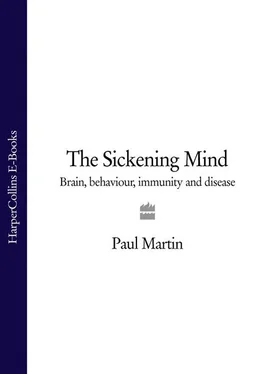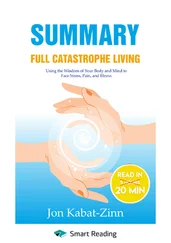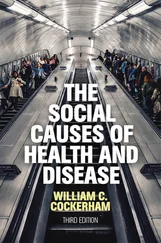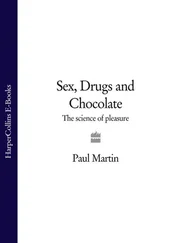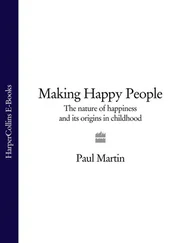The volunteers in this experiment were deliberately infected with viruses in order to avoid a potential ambiguity that had undermined previous research. Critics had pointed out that a correlation between psychological factors and colds could be attributed to varying degrees of exposure to cold viruses, rather than anything to do with biological resistance to infection. Individuals with shy personalities, say, or those who have recently experienced a traumatic life event, might be inclined to stay at home and would therefore have fewer opportunities to catch a cold.
By exposing all subjects equally to cold viruses Totman’s experiment excluded this possibility. The fact that psychological measures still predicted the clinical outcome implied a more direct link between mental state and disease.
The technique of deliberately exposing people to bacteria or viruses in order to assess their vulnerability had, incidentally, been used before. In one hair-raising experiment in the early 1970s a group of healthy (and obviously well-motivated) volunteers were exposed to bacteria which cause a plague-like disease, with symptoms including prolonged fever, vomiting, headaches and swollen lymph nodes. Two days before they were infected each subject’s stress level was assessed using standard psychological techniques. Those who registered the highest stress levels went on to have the most severe fevers.
Further compelling evidence for a connection between psychological stress and colds came a few years ago from a similar experiment. It is worth considering this experiment in detail because it illustrates some important general points.
Sheldon Cohen and colleagues recruited 420 healthy men and women and installed these worthy volunteers in residential accommodation at the British Medical Research Council’s Common Cold Unit in Salisbury. They then used standard psychological techniques to assess the mental state and stress level of each volunteer. Specifically, the researchers noted the life events that each subject had experienced over the previous year; the extent to which subjects perceived themselves as unable to cope with the demands placed on them by life; and each individual’s current emotional state. The volunteers were then exposed to a standard dose of cold viruses which matched the level of virus exposure one might expect to find in normal life. Each subject was given nasal drops containing one of five viruses capable of producing a common cold. 3
Over the following week the subjects were monitored to see if they had been infected and, if so, whether they then developed clinical symptoms of a cold. Each day a doctor examined them for signs and symptoms of a cold using a standard checklist. 4 (So this experiment, you will notice, was immune from the criticism that stress might have affected the subjects’ sickness-related behaviour as opposed to their actual health.)
The results of Cohen’s experiment were clear and compelling. The more psychological stress an individual reported having been exposed to in the past, the greater their chances of infection with cold viruses and, once infected, the greater their chances of developing a clinical cold. Both the risk of viral infection and the risk of developing clinical symptoms increased in direct proportion to the amount of stress.
The correlation between stress, infection and illness was impressively strong. Individuals with the highest stress ratings were six times more likely to be infected with cold viruses than those with the least stress, and twice as likely to develop a cold. Moreover, these associations between stress, infection and illness held up even after the data had been adjusted statistically to remove any effects of other potentially relevant factors, including the subjects’ age, sex, prior health, allergies, smoking and drinking habits, sleep and exercise patterns, diet, weight and education.
The technique of deliberately exposing the subjects to viruses ensured that they all had an equal opportunity to be infected. But you can be exposed to viruses without being infected. When you travel in a crowded train or bus you are regularly showered with exotic bacteria and viruses, but fortunately infection does not inevitably follow. Most of the time the bugs fail to make it past your skin or penetrate your inhospitable orifices. To establish that you have actually been infected it must be possible to recover viruses from your blood or body fluids, or show that your immune system has generated antibodies against the virus.
Exposure to viruses and subsequent infection are not the only steps along the path to illness, however. Not every infection develops into a clinical disease. The number of colds you will suffer in a lifetime represents a minuscule fraction of the number of cold virus infections you have had.
Detailed analysis of this experimental data enabled Cohen and his colleagues to tease apart the influences of stress on these two distinct components of disease. Whether or not someone was infected by the cold viruses depended primarily on how they were feeling at the time, especially their current perception of stress and negative emotions. But once they had been infected their chances of going on to develop a clinical cold depended more on their previous exposure to stressful life events than their current emotional state.
These results illustrate a general point: an individual’s psychological state can exert different influences on the various steps in the pathway to disease, from initial exposure to disease-causing viruses or bacteria, through infection by those viruses or bacteria, to the development of disease symptoms and the behavioural response to those symptoms.
We have sampled some of the extensive evidence that what goes on in people’s minds really does affect their chances of becoming ill or dying. The next question is how. It is time to consider the question of mechanism.
3 Psyche’s Machine: The Inside Story
Her pure and eloquent blood
Spoke in her cheeks, and so distinctly wrought,
That one might almost say, her body thought.
John Donne, Of the Progress of the Soul ,
‘Second Anniversary’ (1612)
By what means does the mind influence human susceptibility to disease? How can insubstantial thoughts or emotions produce a cold, let alone heart disease or cancer? After all, colds are caused by viruses not thoughts. We have seen evidence that our mental and physical states affect each other; what we need now is an explanation of how they do this. We need a mechanism.
In this chapter we shall explore the biological and psychological pathways by which the mind influences physical health – and, as we shall see, how physical health in turn influences the mind. This is the inside story of how the mind and body interact. There are three main strands to this story. First, our minds can make us believe we are ill, whether or not we really are ill in any objective, clinical sense. Our psychological and emotional state affects our perception of bodily symptoms and our reaction to those symptoms. This is the familiar (and generally misleading) connotation behind terms such as ‘psychosomatic’. But the mind does more than influence our perception of physical wellbeing: it can genuinely affect our physical health. We come now to the second and third strands of the story.
The mind impinges on physical health in two fundamentally different ways: through our behaviour and, more directly, through our body chemistry. Psychological and emotional factors can lead us to behave in unhealthy or self-destructive ways which increase the risks of disease, injury or death. Smoking is an obvious example. Meanwhile, beneath the surface, our mental state can alter our susceptibility to disease by influencing the body’s biological defence mechanisms, most notably the immune system.
Читать дальше
